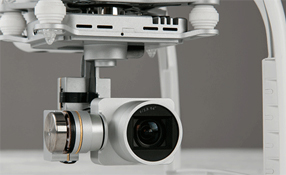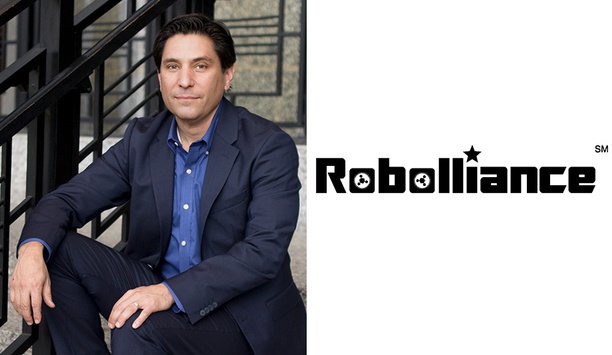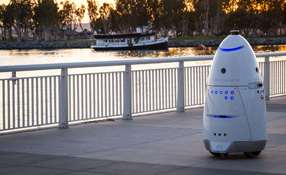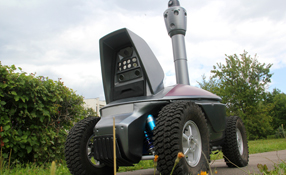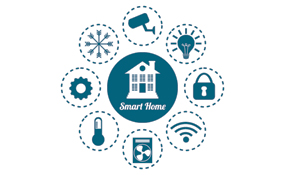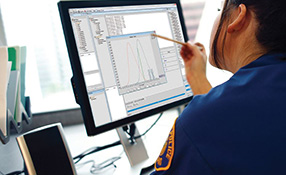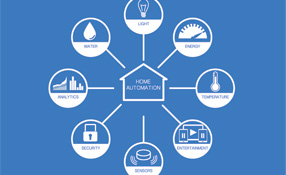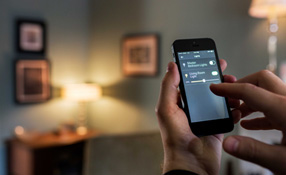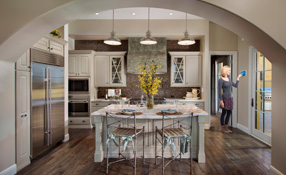Home security isn’t just home security anymore. These days cameras, door and window alarms are just pieces of the web–enabled “smart home.” And, the home is getting smarter, as service providers begin to merge home security systems with home automation. The added value of these additional features is now drawing more potential customers to the security systems market. Consider Icontrol’s recent introduction of its new water sensor – the first of a line of Z-Wave-driven accessories for its Piper Wi-Fi-enabled all-in-one home awareness and automation device.
Home Automation Accessories
Consider Icontrol’s recent introduction of its new water sensor – the first in a line of Z-Wave-driven accessories for its Piper Wi-Fi-enabled all-in-one home awareness and automation device. The water sensor can detect the presence of as little as 0.03 of an inch of water (less than 1 millimeter), and be set to trigger security rules and send alerts to the homeowner’s mobile device. Piper already provides panoramic video and security features for the traditional security tasks of protecting against home break-ins.
Piper is a single, self-contained unit that includes a 180-degree camera that can zoom or pan around the room controlled by a smartphone. Its sensors can detect motion, sound, temperature and humidity. It also has a speaker and microphone, and siren. Users can set up rules for what the device should do when it detects sound or motion, or certain changes in temperature – and now moisture.
Rise Of ‘Smart Home’ Systems
As with other products, these devices are going far beyond what was once considered “home security” and in the process offering new opportunities for the security industry.
“It’s become ‘I’ve got this alarm system, and it’s doing much more for me,’” says Raoul Wijgergang, vice president of the Z-Wave Business Unit at Sigma Designs and a member of the Z-Wave Alliance, a global consortium of over 325 member companies supporting the Z-Wave wireless IoT (Internet of Things) standard. “That has greatly reduced the churn for these service providers and it also has allowed them to create additional revenue from the 20 percent of the base of the U.S. households that have [security systems], but also has the potential to expand beyond people that normally would not have bought alarm systems.”
The move to providing smart home systems has changed the paradigm for all service providers. The fact is, consumers viewed arming and disarming a security system as an essentially bothersome task. “Security systems don’t really spread that much other than in neighborhoods where there are burglaries taking place,” Wijgergang explains. The added value of being able to manage and control thermostats, lights and door locks from a smartphone app changed their perspective from doing something that was good for them (home security) to something that was even fun.
Move Away From Traditional Home Security Services
They are now selling a smart home system with a security feature whereas in the early days they were selling security system with a smart home feature |
“Yes, security is still a big factor, but it’s not the one and only factor anymore,” says Wijgergang. “They are now selling a smart home system with a security feature whereas in the early days they were selling security system with a smart home feature.”
More than 90 percent of security panels include Z-Wave while nearly all smart home hubs being sold in the retail sector include it, according to Wijgergang.
Piper’s devices are part of a growing number of products using the Z-Wave short-range wireless protocol. This technology has proven ideal for these kinds of home-area networks. Z-Wave was developed by Zensys (later acquired by Sigma Designs) as a proprietary wireless standard. It’s estimated that more than 500 consumer home control products are available from retailers including Amazon.com and Home Depot. Home improvement chain Lowes recently launched its own Z-Wave enabled smart home system – Iris.
With the introduction of this and other planned accessories, users can easily update their homes to become a truly connected home through Piper. It’s one of a number of DIY home security systems that has moved away from traditional subscription-based services. Instead of a call center monitoring the system, the device alerts homeowners via their smartphones – and they can decide whether to call the police.



